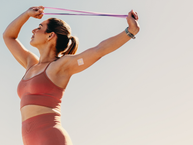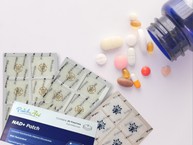In the journey towards achieving optimal health, combining innovative solutions likePatchAid vitamin patches with a well-structured, healthy diet could create a synergistic effect, amplifying the benefits.PatchAidpatches offer a unique and efficient way to deliver essential vitamins and nutrients directly through your skin, bypassing the digestive system. When paired with a balanced diet, these patches can help fill nutritional gaps and enhance overall wellness. Here, we'll explore tips on how to maximize your nutritional intake by integratingPatchAidpatches into a healthy dietary routine.
Understanding Your Nutritional Needs
Before integratingPatchAidpatches into your diet, it's vital to assess your individual nutritional needs. Factors such as age, gender, health status, and activity level play a significant role in determining these needs. Consulting with a healthcare provider can offer insights into which nutrients you might be lacking and how you can address these deficiencies.
Balance is Key: The Foundation of a Healthy Diet
A balanced diet that incorporates a variety of nutrients is essential for maintaining health. Focus on including a wide range of foods in your diet:
- Fruits and Vegetables: Aim for a rainbow of colors to ensure a wide variety of vitamins and minerals.
- Whole Grains: Choose whole grains over refined grains for added fiber and nutrients.
- Proteins: Incorporate lean Protein sources, such as fish, poultry, beans, and nuts.
- Dairy or Dairy Alternatives: Select low-fat or fat-free options rich in calcium and vitamin D.
- Healthy Fats: Include sources of healthy fats, such as avocados, olive oil, and omega-3s from fish.
Pairing PatchAid Patches with Your Diet
1. Identify Nutritional Gaps
Even with a balanced diet, there might be specific nutrients that you're still lacking. For instance, if you're vegetarian, you might benefit from B12 Energy Plus Vitamin Patch and Iron Patches by PatchAid. Use PatchAid patches to target these specific deficiencies.
2. Complement, Don't Replace
PatchAid patches should complement your diet, not replace it. Continue to consume a variety of foods to ensure a broad spectrum of nutrients while using patches to boost intake of specific vitamins and minerals.
3. Tailor Patch Use to Your Diet
If your diet is low in certain foods, like dairy, consider Vitamin D3/Calcium Vitamin Patch. For those not getting enough sunlight, this patch could also offer additional support.
Individuals focusing on heart health can benefit from PatchAid’s Omega-3 Vitamin Patch to target cardiovascular wellness.
4. Timing Matters
Sync your PatchAid patch usage with your dietary intake for optimal absorption. For instance, Simply Iron Patch used in conjunction with Vitamin C-rich meals can improve iron absorption.
5. Listen to Your Body
Pay attention to how your body responds to the patches in conjunction with your diet. Adjust as necessary, and consult a healthcare provider if you experience any adverse effects or have concerns about your nutrient intake.
Conclusion
Integrating PatchAid patches with a balanced diet offers a holistic approach to meeting your nutritional needs. By following these tips, you can ensure that you're not only getting the full spectrum of essential nutrients from your diet but also addressing any specific deficiencies with the targeted support of PatchAid patches. Remember, a proactive approach to nutrition can significantly impact your overall health and wellbeing.







